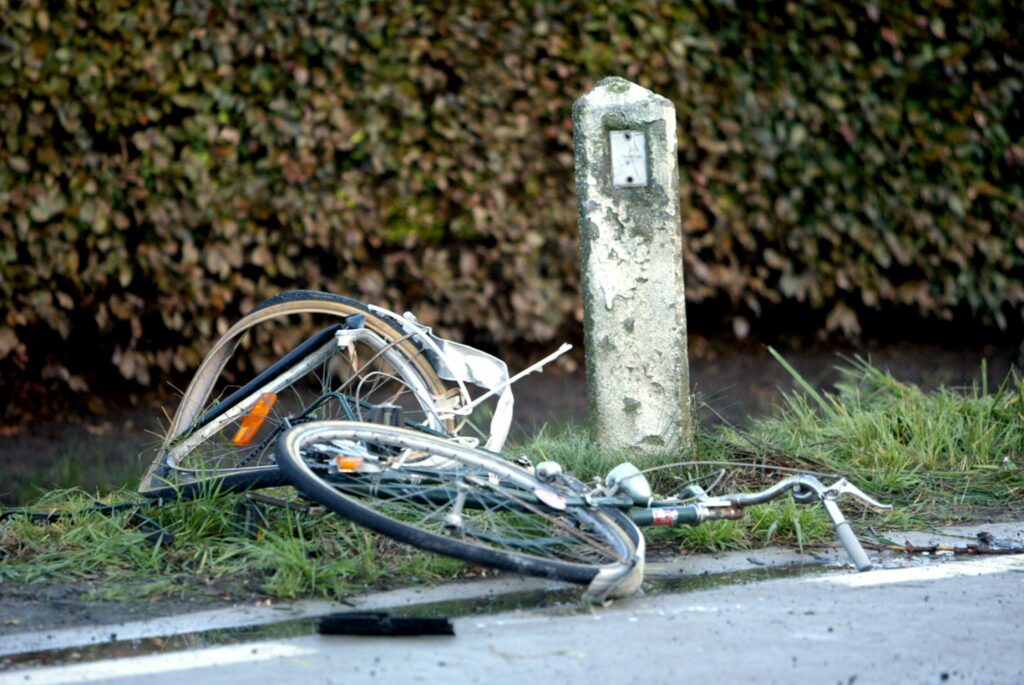Cyclists now make up around half of those seriously injured following a traffic accident, a significant rise compared to 2016. Overall, these casualties have fallen, but not by enough to meet government-set targets.
In one year, nearly 15,000 people were hospitalised in Belgium after a road accident, with a quarter of them suffering serious injuries, such as skull fractures, hip fractures or spinal injuries, Vias Road Traffic Institute reported based on hospital data from 2022. The number of seriously injured people did drop by 19% over the past decade (from 4,191 in 2013 to 3,386 in 2022).
"The decline does not keep us on track to meet the set target of 50% fewer seriously injured casualties by 2030 compared to 2019," Vias spokesperson Stef Willems said.
Most seriously injured victims are aged between 40 and 64 years old (38%) or over 65 years old (31%), explained by the fact that middle-aged or senior citizens make up the biggest population group. However, of all over-65s who suffer a serious injury in traffic, 63% are cyclists, while among the other age groups, the percentage is lower.
Seriously injured victims are also much more likely to be men (70%). Among the youngest road users (aged 0 to 14), the number of seriously injured victims fell sharply in recent years (-44%). "For the first time, fewer than 100 children under the age of 15 were seriously injured," Willems said.
One in two is a cyclist
The hospital data highlighted that cyclists are the only group of road users for whom the number of serious injuries has been increasing in recent years. While in 2016, their share in the total number of seriously injured people was 37%, this figure rose to 49% by 2022, meaning one in two seriously injured people is a cyclist.
They currently represent the largest group. However, this can be explained by the fact that there are many more cyclists than several years ago.
By contrast, the share of seriously injured car occupants decreased (from 27% to 16%). Meanwhile, victims are most often seriously injured after a collision with a motorised vehicle. Among pedestrians, 85% of cases involved a vehicle.
Seriously injured e-scooter riders and cyclists are also relatively often involved in one-sided accidents – among cyclists, well over half of the hospitalisations were after a fall without another party being involved.
Types of injuries
The hospital data also gives clearer insight into the nature of injuries by transport mode. Among e-scooter users (which could be distinguished in hospital data for the first time in 2022), 60% of all serious injuries involved a head injury. Both Vias and trauma surgeons have repeatedly called on the government to make helmets mandatory for e-scooter riders.
Meanwhile, a quarter of injuries sustained by people riding e-scooters were hip and upper leg injuries. Overall, this still involves a relatively small group of 48 seriously injured victims.
Serious head injuries are also most common among pedestrians (46%), cyclists (42%) and car occupants (35%). "In absolute numbers, cyclists suffer a head injury 4.5 times more than pedestrians and 2.5 times more than car occupants," Willems said. Cyclists also suffer more serious injuries to the upper leg (42%).
Among drivers of vehicles, head and chest injuries both account for one-third of incidents (both 35%), while hip and thigh injuries (22%) are also frequently diagnosed.

